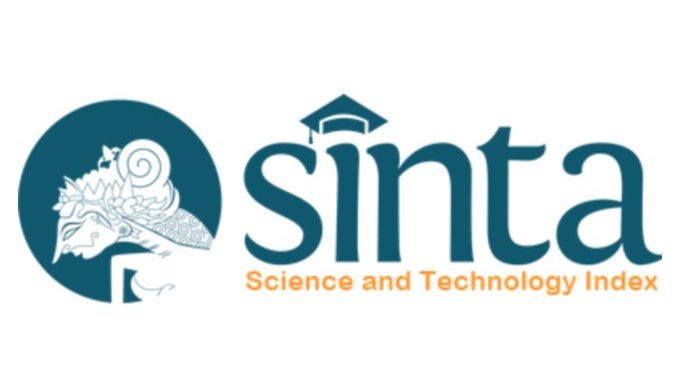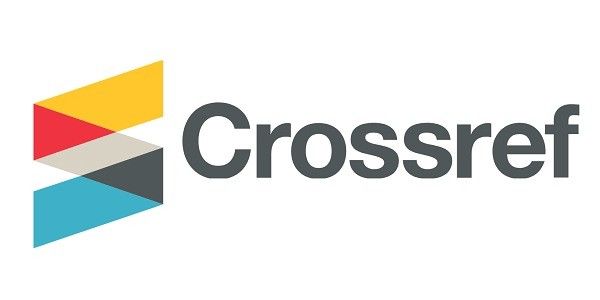Manfaat Klinis Insulin Glargine U300 - Insulin Basal Generasi Kedua
Analisis
DOI:
https://doi.org/10.55175/cdk.v51i11.1363Kata Kunci:
Diabetes melitus tipe 2, insulin basal, insulin glargineAbstrak
Diabetes yang tidak diobati dapat menyebabkan komplikasi dan meningkatkan risiko kematian. Banyak pasien diabetes melitus tipe 2 akan memerlukan obat suntik dalam 5-10 tahun setelah diagnosis, setelah kegagalan terapi 2 atau 3 antidiabetik oral. Penambahan insulin basal dapat ditoleransi dengan baik, lebih efektif dengan risiko hipoglikemia dan kenaikan berat badan yang lebih kecil dibandingkan rejimen insulin lainnya,
namun berisiko hipoglikemia. Insulin glargine U300 dengan formulasi khusus menurunkan risiko hipoglikemia pasien diabetes
Unduhan
Referensi
Boyko E, Magliano DJ, Karuranga S, Piemonte L, Riley P, Saeedi P, et al. IDF diabetes atlas 2021 [Internet]. 2021. Available from: https://diabetesatlas.org/idfawp/resource-files/2021/07/IDF_Atlas_10th_Edition_2021.pdf.
Soetedjo NNM, McAllister SM, Ugarte-Gil C, Firanescu AG, Ronacher K, Alisjahbana B, et al. Disease characteristics and treatment of patients with diabetes mellitus attending government health services in Indonesia, Peru, Romania and South Africa. Trop Med Int Health. 2018;23(10):1118-28. DOI: 10.1111/tmi.13137.
Stratton IM, Adler AI, Neil HA, Matthews DR, Manley SE, Cull CA, et al. Association of glycaemia with macrovascular and microvascular complications of type 2 diabetes (UKPDS 35): Prospective observational study. BMJ. 2000;321(7258):405-12. DOI: 10.1136/bmj.321.7258.405.
The ADVANCE trial: Results, clinical implications and perspectives. An article from the e-journal of the ESC Council for Cardiology Practice Vol. 6, No 28 - 18 Mar 2008.
Karter AJ, Subramanian U, Saha C, Crosson JC, Parker MM, Swain BE, et al. Barriers to insulin initiation: The translating research into action for diabetes insulin starts project. Diabetes Care 2010;33(4):733-5. DOI: 10.2337/dc09-1184.
Al Mazrou’I A, Al Khusaibi G, Ward MA, Alkhaifi M, Theodorson T. Barriers in initiating insulin treatment in type 2 diabetes mellitus among physicians in Wilayat of Bowsher in Oman. J Family Med Community Health 2015;2(3):1034. DOI: https://doi.org/10.47739/2379-0547/1034.
Simon AC, Gude WT, Holleman F, Hoekstra JB, Peek N. Diabetes patients’ experiences with the implementation of insulin therapy and their perceptions of computer-assisted self-management systems for insulin therapy. J Med Internet Res. 2014;16(10):e235. DOI: 10.2196/jmir.3198.
Ross SA, Tildesley HD, Ashkenas J. Barriers to effective insulin treatment: The persistence of poor glycemic control in type 2 diabetes. Curr Med Res Opin. 2011;27(Suppl 3):13-20. DOI: 10.1185/03007995.2011.621416.
Khunti K, Davies MJ, Kalra S. Self-titration of insulin in the management of people with type 2 diabetes: A practical solution to improve management in primary care. Diabetes Obes Metab. 2013;15(8):690-700. DOI: 10.1111/dom.12053.
Pathan F, Goh SY, Rudijanto A, Gadekar A, Jain A, Nicodemus N Jr. Hypoglycaemia among insulin-treated patients with diabetes: Southeast Asia cohort of IO HAT study. J ASEAN Fed Endocr Soc. 2018;33(1):28-36. DOI: 10.15605/jafes.033.01.05.
Lin YK, Agni A, Chuisano S, Fetters MD, Funnell M, Pop-Busui R, et al. Patient-reported usefulness and challenges in using hypoglycemia-informing features of continuous glucose monitors to manage hypoglycemia. Sci Diabetes Self Manag Care 2023;49(3):229-38. DOI:10.1177/26350106231168859.
Ahren B. Avoiding hypoglycemia: A key to success for glucose-lowering therapy in type 2 diabetes. Vasc Health Risk Manag. 2013;9:155-63. DOI: 10.2147/VHRM.S33934.
Russell-Jones D, Pouwer F, Khunti K. Identification of barriers to insulin therapy and approaches to overcoming them. Diabetes Obes Metab. 2018;20(3):488-96. DOI: 10.1111/dom.13132.
Mauricio D, Meneghini L, Seufert J, Liao L, Wang H, Tong L, et al. Glycaemic control and hypoglycaemia burden in patients with type 2 diabetes initiating basal insulin in Europe and the USA. Diabetes Obes Metab. 2017;19(8):1155-64. DOI: 10.1111/dom.12927.
Eliaschewitz FG, Barreto T. Concepts and clinical use of ultra-long basal insulin. Diabetol Metab Syndr. 2016;8:2. DOI: 10.1186/s13098-015-0117-1.
Pettus J, Cavaiola TC, Tamborlane WV, Edelman S. The past, present, and future of basal insulins. Diabetes Metab Res Rev. 2016;32(6):478–96. DOI: 10.1002/dmrr.2763.
Hedrington MS, Pulliam L, Davis SN. Basal insulin treatment in type 2 diabetes. Diabetes Technol Ther. 2011;13:S33-42. DOI: 10.1089/dia.2011.0062.
Becker RH, Dahmen R, Bergmann K, Lehmann A, Jax T, Heise T. New insulin glargine 300 Units · mL-1 provides a more even activity profile and prolonged glycemic control at steady state compared with insulin glargine 100 Units · mL-1. Diabetes Care 2015;38(4):637-43. DOI: 10.2337/dc14-0006.
Bailey TS, Pettus J, Roussel R, Schmider W, Maroccia M, Nassr N, et al. Morning administration of 0.4U/kg/day insulin glargine 300U/mL provides less fluctuating 24-hour pharmacodynamics and more even pharmacokinetic profiles compared with insulin degludec 100U/mL in type 1 diabetes. Diabetes Metab. 2018;44(1):15-21. DOI: 10.1016/j.diabet.2017.10.001.
Yki-Jarvinen H, Bergenstal R, Ziemen M, Wardecki M, Muehlen-Bartmer I, Boelle E, et al. New insulin glargine 300 units/mL versus glargine 100 units/mL in people with type 2 diabetes using oral agents and basal insulin: Glucose control and hypoglycemia in a 6-month randomized controlled trial (EDITION 2). Diabetes Care 2014;37(12):3235-43. DOI: 10.2337/dc14-0990.
Bolli GB, Riddle MC, Bergenstal RM, Ziemen M, Sestakauskas K, Goyeau H, et al. New insulin glargine 300 U/ml compared with glargine 100 U/ml in insulin-naïve people with type 2 diabetes on oral glucose-lowering drugs: A randomized controlled trial (EDITION 3). Diabetes Obes Metab. 2015;17(4):386-94. DOI: 10.1111/dom.12438.
Roussel R, Ritzel R, Boelle-Le Corfec E, Balkau B, Rosenstock J. Clinical perspectives from the BEGIN and EDITION programmes: Trial-level meta-analyses outcomes with either degludec or glargine 300U/mL vs glargine 100U/mL in T2DM. Diabetes Metab. 2018;44(5):402-9. DOI: 10.1016/j.diabet.2018.02.002.
Rosenstock J, Cheng A, Ritzel R, Bosnyak Z, Devisme C, Cali AMG, et al. More similarities than differences testing insulin glargine 300 units/ml versus insulin degludec 100 units/ml in insulin-naive type 2 diabetes: The randomized head-to-head bright trial. Diabetes Care. 2018;41(10):2147-54. DOI: 10.2337/dc18-0559.
Galstyan GR, Tirosh A, Vargas-Uricoechea H, Mabunay MA, Coudert M, Naqvi M, et al. Real-world effectiveness and safety of insulin glargine 300 u/ml in insulin-naïve people with type 2 diabetes: The ATOS study. Diabetes Ther. 2022;13(6):1187-202. DOI: 10.1007/s13300-022-01266-4.
Sethi B, Al-Rubeaan K, Unubol M, Mabunay MA, Berthou B, Pilorget V, et al. Efficacy and safety of insulin glargine 300 u/ml in people with type 2 diabetes uncontrolled on basal insulin: The 26-week interventional, single-arm artemis-dm study. Diabetes Ther. 2022;13(7):1395-408. DOI: 10.1007/s13300-022-01271-7.
Bailey TS, Gill J, Jones S M, Shenoy L, Nicholls C, Westerbacka J. Real-world outcomes of addition of insulin glargine 300 U/mL (Gla-300) to glucagon-like peptide-1 receptor agonist (GLP-1 RA) therapy in people with type 2 diabetes: The DELIVER-G study. Diabetes Obes Metab. 2022;24(8):1617-22. DOI: 10.1111/dom.14739.
Ritzel R, Ghosh S, Emral R, Malek R, Zeng L, Mabunay MA, et al. Comparative efficacy and safety of Gla-300 versus IDegAsp in insulin-naïve people with type 2 diabetes mellitus uncontrolled on oral anti-diabetics. Diabetes Obes Metab. 2023;25(9):2495-504. DOI: 10.1111/dom.15121.
Home PD, Bergenstal RM, Bolli GB, Ziemen M, Rojeski M, Espinasse M, et al. New insulin glargine 300 units/ml versus glargine 100 units/ml in people with type 1 diabetes: A randomized, phase 3a, open-label clinical trial (EDITION 4). Diabetes Care 2015;38(12):2217-25. DOI: 10.2337/dc15-0249.
Danne T, Tamborlane WV, Malievsky OA, Franco DR, Kawamura T, Demissie M, et al. Efficacy and safety of insulin glargine 300 units/ml (gla-300) versus insulin glargine 100 units/ml (gla-100) in children and adolescents (6-17 years) with type 1 diabetes: Results of the EDITION JUNIOR randomized controlled trial. Diabetes Care 2020;43(7):1512-9. DOI: 10.2337/dc19-1926.
Javier Escalada F, Halimi S, Senior PA, Bonnemaire M, Cali AMG, Melas-Melt L, et al. Glycaemic control and hypoglycaemia benefits with insulin glargine 300 U/mL extend to people with type 2 diabetes and mild-to-moderate renal impairment. Diabetes Obes Metab. 2018;20(12):2860-8. DOI: 10.1111/dom.13470.
Ritzel R, Harris SB, Baron H, Florez H, Roussel R, Espinasse M, et al. A randomized controlled trial comparing efficacy and safety of insulin glargine 300 units/ml versus 100 units/ml in older people with type 2 diabetes: Results from the SENIOR study. Diabetes Care 2018;41(8):1672-80. DOI: 10.2337/dc18-0168.
Westerbacka J. Presented at ADA 2022. Los Angeles: New Orleans; 2022, June 3–7.
Lantus XR summary of product information. BPOM; 2021.
Hassanein M, Buyukbese MA, Malek R, Pilorget V, Naqvi M, Berthou B, et al. Real-world safety and effectiveness of insulin glargine 300 U/mL in participants with type 2 diabetes who fast during Ramadan: The observational ORION study. Diabetes Res Clin Pract. 2020;166:108189. DOI: 10.1016/j.diabres.2020.108189.
Ji L, Luo Y, Bee YM, Xia J, Nguyen KT, Zhao W, et al. Use of basal insulin in the management of adults with type 2 diabetes: An Asia-Pacific evidence-based clinical practice guideline. J Diabetes 2023;15(6):474-87. DOI:10.1111/1753-0407.13392
Unduhan
Diterbitkan
Cara Mengutip
Terbitan
Bagian
Lisensi
Hak Cipta (c) 2024 Nanang Miftah Fajari

Artikel ini berlisensi Creative Commons Attribution-NonCommercial 4.0 International License.





















